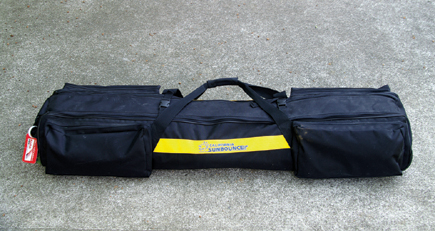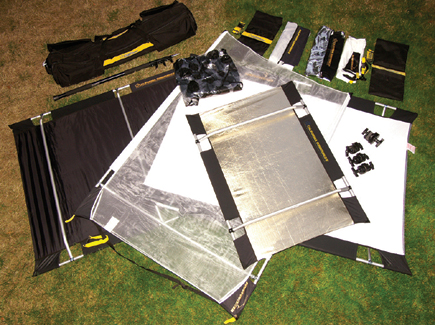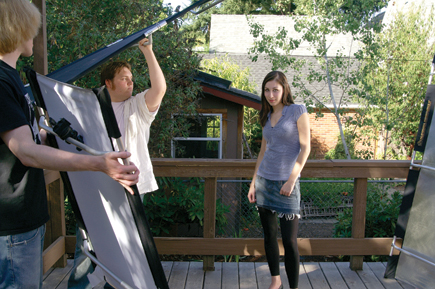Back Yard Studio In A Bag; A Kit Full Of Location Light Modifiers
Let's face it. Not every photographer has a loft in the photo district
that includes a studio space in which to photograph. Heck, not every photographer
has a back yard. Don't let that stop you from reading this review. Even
if you don't have a back yard or studio space you have something just
as good, Central Park, Herman Park, some park.
At any rate, photography is about light. And available light can be the best
light--unless you modify the available light to make it even better. For
example, a trick I have often used, especially when traveling, is to open a
large book and place it on a table to reflect light onto the subject's
face--they don't even have to be reading, nor does the book have
to be in the picture. This is usually done in a room where the light is either
subdued or is too much overhead, casting hard shadows under the brow. You could
always use an on-camera flash bounced off a wall or ceiling. But then you're
not making use of the available light, but creating your own. The advantage
of available light is not having to fuss with a flash, and it is almost always
natural looking (don't miss that word "almost").
Equipment Used |
|
 |
|
|
|
 |
|
|
|
|
And available light can take many forms. I once knew a photographer who specialized
in photographing kids in Santa Monica, California, in a park overlooking the
ocean. She only worked during the foggy season and would cancel an engagement
if the fog didn't cooperate. She had more clients than she could handle,
using only available light.
While fog is a complete wraparound light source, not everyone has access to
it, or clients who are willing to wait. For most photographers it is necessary
to modify and enhance the light that is, well, available. To accomplish this
photographers have used any number of ingenious homemade and store-bought devices.
One of the simplest is to wrap a piece of heavy cardboard with crinkled aluminum
foil. This works well in many situations but the size is often limited, unless
you have a refrigerator box and lots of foil. Then there becomes the question
of how to carry it to the location.
 |
|
|
And what about size? When it comes to soft light and reflectors, bigger is
better. In an attempt to replicate the light which we can create in a studio
using $10,000 or more of strobes, umbrellas, and softboxes, many photographers
have designed their own line of location reflectors. Sometimes they decide to
go public.
One of these, Wolfgang-Peter Geller, began his career as a photojournalist.
Geller was awarded the World Press Photo Award in 1972 for his coverage of a
story in Germany. After receiving the award, Geller changed the direction of
his career, traveling around the globe to work on location for major advertising
agencies. What he discovered, and what many other photographers before him had
already known, is that the location reflectors available for still photographers,
though well designed in many cases, were flimsy and broke easily. I have personally
had this experience with numerous reflectors that sport plastic or wire frames.
































